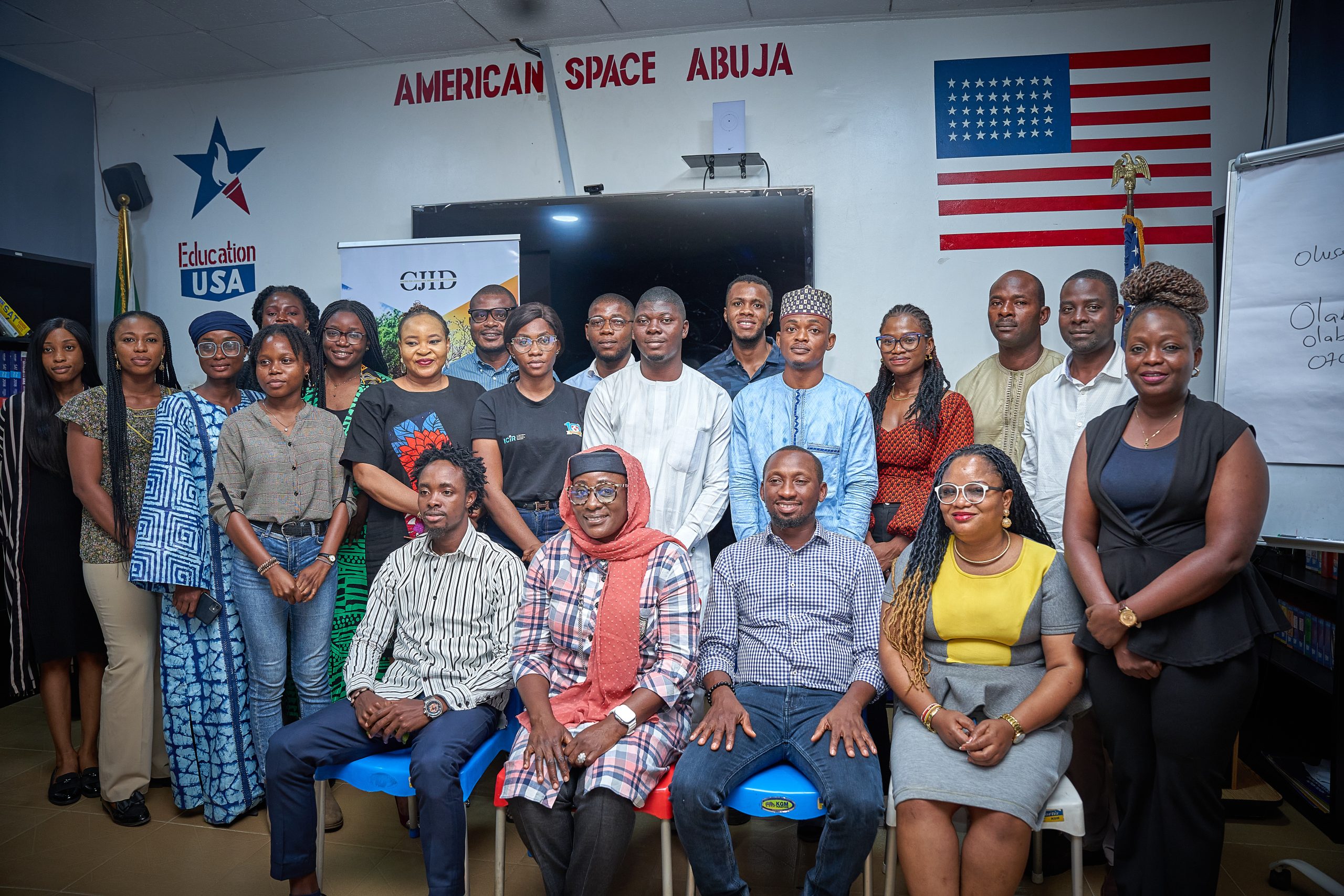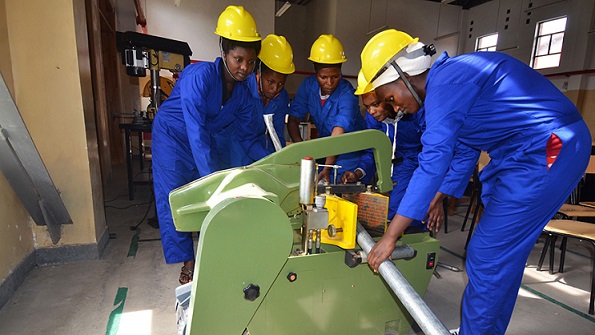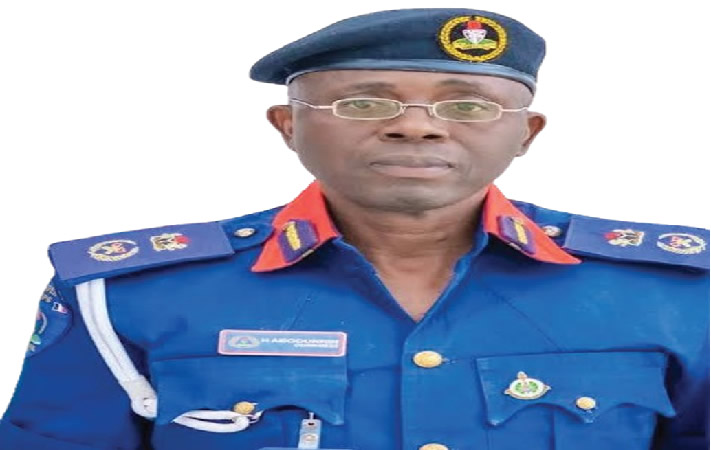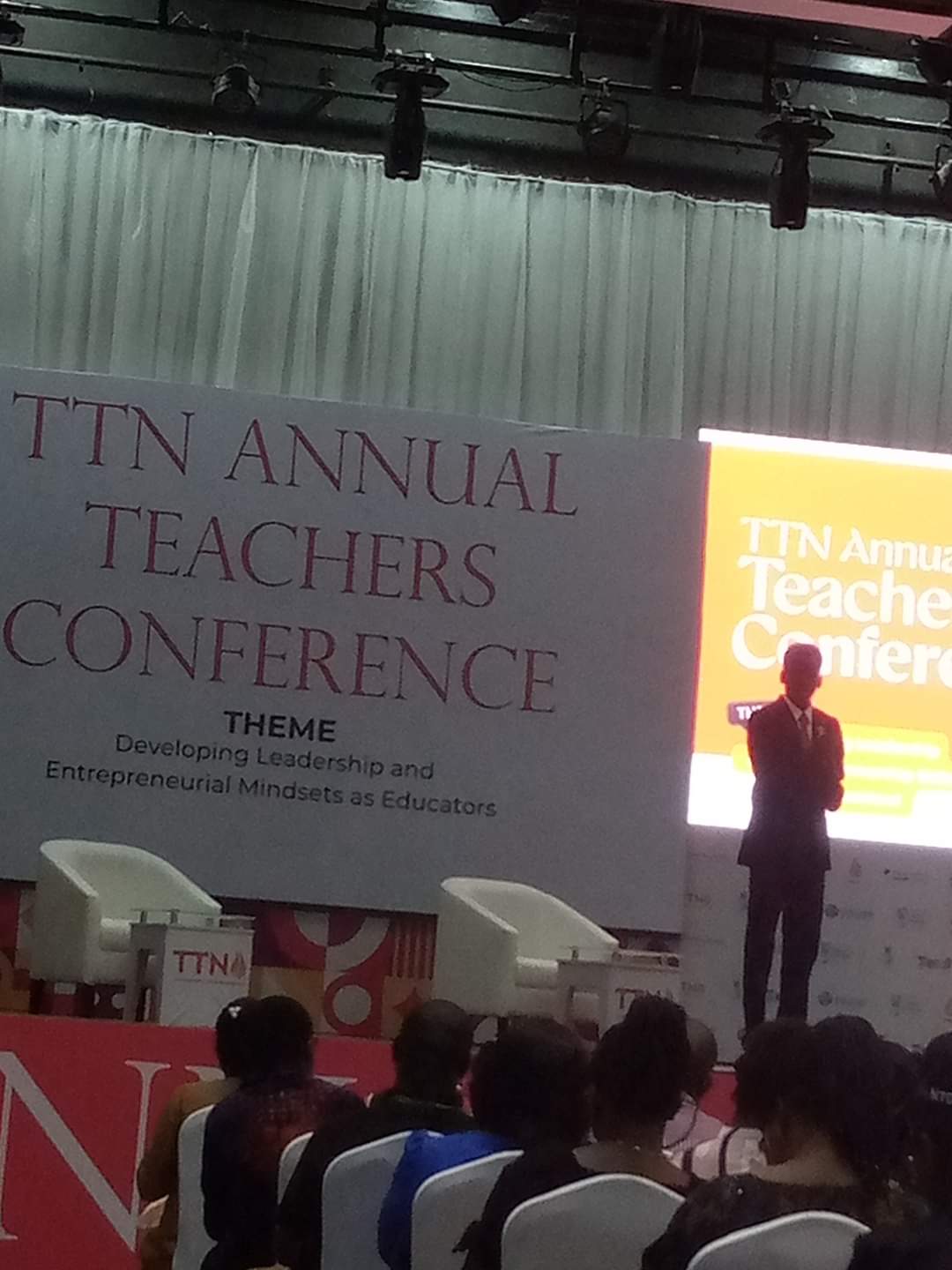In the hustle and bustle of Nigeria’s capital city, Abuja, a diverse group of 15 journalists recently gathered at the City Library, American Space, to embark on a transformative journey. A journey that would empower them to wield their pens as potent tools for change.
Organised by the Centre for Journalism Innovation and Development (CJID) and generously funded by the Public Policy Section of the United States Embassy in Nigeria, the workshop’s mission was clear: to equip these journalists with the knowledge and skills to tackle one of the most pressing issues of our time—climate change.
The Centre for Journalism Innovation and Development (CJID) is a West African media innovation and development think tank.
For these journalists, it wasn’t just another workshop; it was a call to action. The world is facing an unprecedented environmental crisis, and the role of the media in addressing it cannot be overstated. Climate change affects us all, from the bustling metropolises to the farthest rural villages. It’s not just a scientific conundrum; it’s a human story with the potential to reshape our lives.
As the workshop unfolded, the participants explored a diverse array of modules designed to illuminate the multifaceted dimensions of climate change reporting. Here are some of the highlights.
“Journalists are agents of change and you are on the field, in touch with the most recent developments. This is why we believe the best way to create public awareness for climate change is through a collaboration with the media,” Aisha Gambari, senior public policy officer, US Embassy, said.
The Climate Science Primer
The foundation of any climate change report is understanding the science. Tobi Oluwatola, PhD, executive director, CJID guided the journalists through the intricacies of climate change—its causes, consequences, and the global efforts to combat it. Armed with this knowledge, the journalists would be able to dissect complex scientific data and present it in a way that resonates with the public.
Climate change is a change in the average temperature and cycles of weather over a long period. Since 1880, scientists have kept thermometer-based records of the global surface temperature.
What is happening to the global temperature? The planet is becoming warmer; the climate is changing.
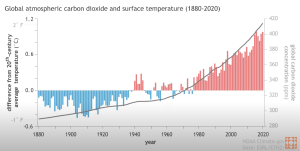
The Science of Human-Induced Climate Change
Human-induced climate change refers to the phenomenon where human activities release greenhouse gases into the atmosphere. These gases include carbon dioxide (CO2), methane (CH4), and nitrous oxide (N2O), and their concentration in the atmosphere has been on the rise due to human activities, especially since the Industrial Revolution.
Solar energy from the Sun reaches the Earth as short-wave radiation and is absorbed by the Earth’s surface. In response, the Earth emits long-wavelength radiation. Greenhouse gas molecules in the atmosphere capture some of this energy, trapping it.
This process is essential for maintaining the Earth’s warmth and is crucial for supporting life. However, it also leads to an increase in the Earth’s temperature, a phenomenon known as the greenhouse effect, which drives climate change.
While trees play a role in reducing CO2 levels through photosynthesis, human activities, such as deforestation for construction and resource use, have counteracted these natural processes.
The Human Faces of Climate Change
Beyond the data and statistics, it’s the human stories that make climate change relatable. The journalists heard firsthand accounts from communities already grappling with the impacts of a changing climate. From farmers in the drought-stricken north to coastal communities facing rising seas, these stories reinforced the urgency of their mission.
Read also: 5 ways climate change affects education in Nigeria
Journalism as a Catalyst for Change
A key takeaway was that journalism isn’t just about reporting; it’s about shaping the public discourse. The journalists learned about the power they wield as agenda-setters. They were inspired to go beyond the surface and explore the root causes and systemic issues that underlie climate change.
Communicating Climate Solutions
In the face of dire climate news, solutions often take a back seat. This module was a refreshing reminder that hope exists. Journalists explored stories of innovative technologies, sustainable practices, and community initiatives that offer real solutions to climate challenges. It was a reminder that their words could inspire action. There was a module on solutions journalism.
Solutions journalism is a thorough and compelling form of reporting that focuses on responses to societal issues. It involves a critical and objective examination of how individuals or groups attempt to address common problems.
While traditional journalism often defines news as highlighting “what’s gone wrong,” solutions journalism seeks to broaden this definition by recognising that responses to problems also deserve attention as newsworthy subjects.
By incorporating in-depth coverage of solutions, journalists can provide a more comprehensive narrative. Solutions journalism works in harmony with and enhances the coverage of problems.
The Ethical Imperative
Journalism comes with a responsibility to report ethically and accurately. The workshop underscored the importance of fact-checking, avoiding sensationalism, and steering clear of false balance in climate reporting.
The Road Ahead
The workshop concluded with a sense of purpose. The journalists left with a deepened commitment to climate reporting. They understood that they weren’t just writing stories; they were amplifying the voices of those affected by climate change, holding leaders accountable, and inspiring communities to take action.
As they returned to their respective newsrooms, the journalists carried with them not just the knowledge they had gained but a shared determination to elevate the climate conversation. Through their collective efforts, they would continue to shine a spotlight on the climate crisis, forging a path toward a more sustainable and resilient future.


